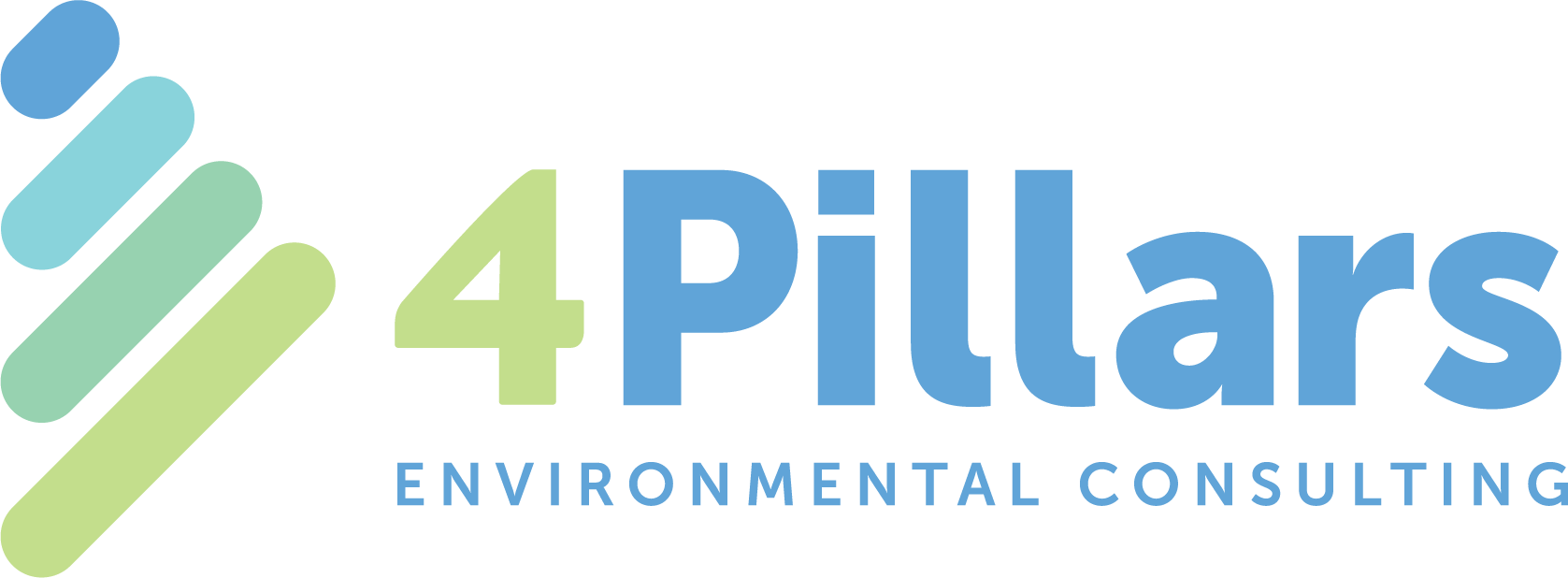Hello there! Welcome to the first blog of an exciting new series where our team at 4Pillars’ discusses the four pillars of sustainability on which our company is founded and are at the heart of what we do.
My name is James and I’m a Consultant at 4Pillars, specialising in Contaminated Land and remediation.
In 2019, during the final year of my bachelor’s degree in Natural Science – Environmental Management, I came aboard 4Pillars as an intern and began learning the ropes and getting a glimpse into the diverse world of Environmental Consulting. With clients spanning different sectors, industries, and projects, to say I was blown away would be an understatement.
I quickly realised how integral the four pillars of sustainability were to the company’s operations, and how they manifest in our projects; from short-term preliminary site inspections to multi-year compliance management partnerships.
But what are the four pillars I keep referring to and what do they mean?
They are the four components – environment, economy, society, and inter/intra-generational equity – that must be addressed to achieve true sustainable development. In our operations and industry, we aim to do this holistically by adopting a quadruple bottom line approach, so our company can help society meet its current social and economic needs, without compromising future generations.
Let’s look at the first pillar; the environment.
This pillar is usually defined in terms of protecting the environment: our air, land, water and other natural systems. ‘The environment’ can mean different things at different scales. It can also either be viewed in an anthropocentric manner (i.e. ecosystem services that benefit humankind) or in an objective manner (i.e. health of the system for the benefit of all living and non-living components within it).
It is common for people in our line of work to naturally have a world-view that places environment at the forefront. There are times where we do need to give environmental outcomes precedence. However, the four pillars framework is intended to make sure this occurs via a balanced and considered decision-making process, rather than due to an unconscious preference.
There are times where, following the process, the environment remains the focus. This is particularly true where remediation is needed to address past environmental damage.
A really enjoyable project that comes to mind was one where my colleague Rhys and I were tasked with re-establishing vegetation along a large exposed outcrop overlooking a bushland area. Due to historic mismanagement, the site was experiencing severe soil erosion and native plant damage downslope. We constructed a large brush mat, consisting of natural jute fibre webbing and plant/tree debris. The brush mat acts as a revegetation catalyst, promoting natural germination and growth from the plant matter used, while simultaneously acting as a protective physical covering on the slope. The most satisfying part – other than building the thing and getting a little sweaty – would have to have been the following month. We returned for a site inspection and were surprised by some cute flowers and shoots that were already beginning to grow and protrude out of our brush mat!
I’ll finish up with mentioning some interesting people and organisations that stand out in the environmental space and that I’d like to draw attention to. They have influenced my thinking on how to operate in ways that promote sustainable development:
- Gunter Pauli and the Zero Emissions Research Institute: they research and facilitate business models (such as industry eco-systems) that build clusters of activities where the waste of one activity is the resource of another value-adding activity, and creative solutions inspired by nature’s design principles as inspiration;
- Amory Lovins and the Rocky Mountains Institute: they research ways in which businesses and government bodies can leverage energy efficiency and savings measures to achieve sustainability; and
- Principles involved in urban and rural permacultures, eco-villages, sustainable habitat design and concepts of an “ecological” civilisation.
I hope this has shed some light on the the environmental pillar; what it means, how it is considered in decision-making, and how we see environmental outcomes first-hand on the frontline!
This work is licensed under a Creative Commons Attribution-NonCommercial-NoDerivatives 4.0 International Licence.


